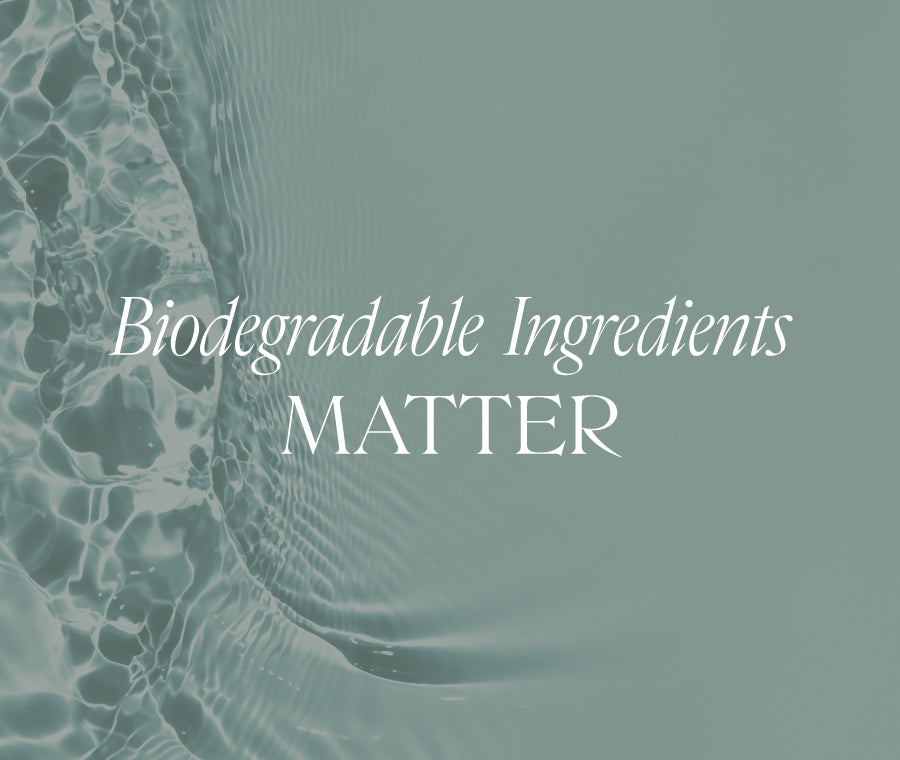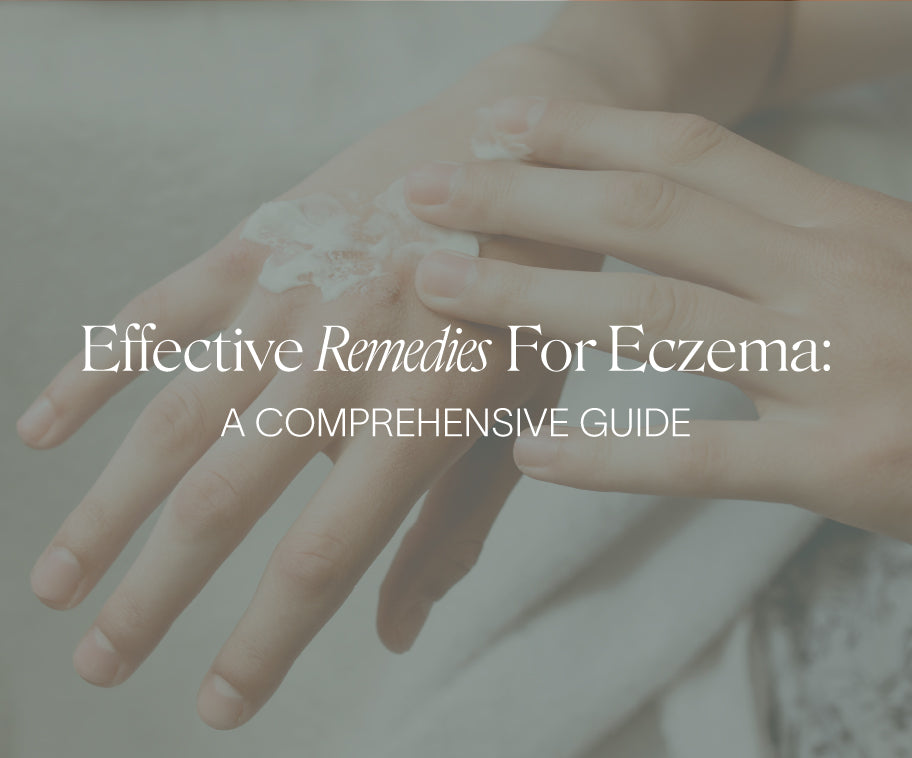Many terms are thrown around in the skincare and beauty industry that market products as environmentally friendly to try to entice a purchase. This includes terms like ‘clean’, ‘natural’, ‘green’, and ‘eco-friendly.’ These marketing efforts are often trying to play on our desire to do things that are good for our body and the world. However, these terms have essentially no regulation. As such, it is very possible (and common!) that you could be misled into buying a product with good intentions that is actually doing much more harm than you intended. My goal in this blog is to help you develop a framework to think about clean beauty and to make a compelling case why it should be a part of your skincare routine.
BACKGROUND
When skincare products were really coming into production in the 1950s, manufacturers were putting in a lot of nonbiodegradable microplastics and parabens into formulations. These additives would help preserve the products but also serve to enhance the texture as well as increase the volume of a product. Further, the risk of harm to people or the environment was thought to be fairly negligible because the quantities were relatively low. Fast forward 75 years and those initial assumptions no longer hold true. Not surprisingly, a little bit of bad stuff turns into a lot of bad stuff after enough time has passed. And now we have a lot more information and experience that is raising questions and concerns about the safety of these chemicals.
MY APPROACH TO CLEAN BEAUTY
I think of ‘Clean Beauty’ as much more than just a label on a box or an advertisement. It is a brand ethos and commitment to using responsibly sourced ingredients that biodegrade and using recyclable (or already recycled) packaging at every step possible. It is realizing that the best ingredient to source is going to be more expensive and harder to obtain. It is knowing that packaging will cost more because it is recycled. It is not resorting to a cheaper or subpar option just to drive down price or increase profit margin. It means using ingredients derived from plants, minerals, and other naturally occurring sources and avoiding synthetic counterparts. It also embraces a minimalist approach to skincare by offering simpler formulations with fewer ingredients, often avoiding unnecessary fillers or additives and cutting down on the push for more and more consumption of products.
Clean beauty brands typically prioritize transparency in their formulations, providing detailed information about the ingredients used and their sourcing. This helps consumers make informed choices about the products they use on their skin. They typically provide detailed information about the origin of their ingredients, how they are processed, and any third-party certifications they hold because that is important to them. Clean beauty products often align with the principles of cruelty-free production, meaning they are not tested on animals.
WHAT DOES IT MEAN TO BE BIODEGRADABLE
When we say a product or material is biodegradable, it means that it can be broken down naturally by microorganisms such as bacteria, fungi, and other living organisms into simpler, non-toxic substances like water, carbon dioxide, and organic matter. This breakdown process occurs over time and under specific environmental conditions dependent on temperature, moisture, and the presence of microorganisms. The end result is that they do not accumulate in our body, waterways or environment in perpetuity.
WHY WE SHOULD CARE
Effect on our bodies
Most of the products we put on our skin are designed to absorb. But then what happens, and where do these chemicals go? Does our body break them down? Do we sweat them out? It turns out that there is a lot of variability, and some of it is very bad. Especially if the chemical accumulates over time. In fact, we also know that some of these chemicals are accumulating in our bodies at an alarming rate. Some studies have raised concerns about the potential health effects of parabens due to their ability to mimic estrogen, a hormone that plays a key role in various physiological processes.
- Estrogenic Activity: Parabens have been shown to exhibit weak estrogenic activity in laboratory studies, meaning they can interact with estrogen receptors in the body. This has raised concerns about their potential to disrupt the endocrine system and interfere with hormonal balance, although the extent of this effect in humans is still debated.
- Breast Cancer: Some studies have suggested a possible link between parabens and breast cancer, as parabens have been detected in breast tissue samples. However, the evidence is limited and inconclusive, and more research is needed to establish a definitive causal relationship between parabens and breast cancer risk.
- Reproductive and Developmental Effects: Animal studies have shown that exposure to high doses of parabens can have adverse effects on reproductive and developmental health, including changes in hormone levels, fertility, and fetal development. However, it's important to note that these studies often use much higher doses of parabens than would typically be encountered in real-life exposure scenarios.
- Allergic Reactions: Parabens are known to cause allergic reactions in some individuals, particularly those with sensitive skin or a history of skin allergies. Symptoms of paraben allergies may include redness, itching, swelling, and irritation of the skin.
Effect on our world
If we check our waterways in really any city you are going to see contaminants from the beauty industry that linger and don’t biodegrade. Parabens, microplastics, microbeads, phthalates, dimethicone, etc. These chemicals don’t belong there and over time wreak havoc on the environment. For example, they can kill small organisms like mollusks and plankton that make up ecosystems.
- Persistence and Bioaccumulation: Parabens are known to be relatively persistent in the environment, meaning they can persist in water and soil for extended periods without breaking down. Additionally, some studies have shown that parabens can bioaccumulate in aquatic organisms, leading to higher concentrations in organisms higher up the food chain.
- Aquatic Toxicity: Studies have demonstrated that parabens can have adverse effects on aquatic organisms, including fish, algae, and invertebrates, at concentrations found in natural water bodies. These effects may include reproductive and developmental abnormalities, altered hormone levels, and decreased survival and growth rates.
- Ecosystem Contamination: Microplastics can be ingested by a wide range of aquatic organisms, including fish, shellfish, and plankton, often mistaking them for food. This ingestion can lead to physical harm, digestive blockages, and internal injuries, affecting the health and survival of these organisms.
- Food Chain Contamination: Microplastics can bioaccumulate in the food chain, meaning that organisms at higher trophic levels may accumulate higher concentrations of microplastics than those lower down. This can lead to the transfer of microplastics to larger predators, including humans, through the consumption of contaminated seafood.
WHERE TO START
Trying to educate yourself here into this can be intimidating and many products that are truly clean and sustainable are often more expensive. That said, it doesn’t have to be a super complicated and you don’t need to strive for 100% compliance all the time, particularly at first. It’s really just about being an informed and conscientious consumer. A great first step is to start by just taking a look at the packaging and the ingredient list.
Ingredients
First, when a biodegradable alternative ingredient exists that has equal effectiveness I think it should be used. Fortunately, I also think a biodegradable alternative always exists in skincare. There is no reason you can’t go biodegradable in your skincare routine due to the effectiveness of a product.
Common non-biodegradable ingredients include:
- Silicones: Silicones are synthetic compounds often used in skincare products for their smoothing, moisturizing, and protective properties. Common types of silicones include dimethicone, cyclomethicone, and cyclopentasiloxane. Silicones are not biodegradable and can accumulate in the environment, particularly in waterways. Brands that regularly utilize silicones include Neutrogena, L'Oréal, Olay, Clinique, Cetaphil and Aveeno.
- Parabens: Parabens are a group of synthetic preservatives commonly used in skincare and cosmetic products to prevent microbial growth and extend shelf life. Examples include methylparaben, ethylparaben, propylparaben, and butylparaben. Parabens have been linked to potential health concerns and are not readily biodegradable. Neutrogena, Aveeno, Olay, Nivea, Dove, Estée Lauder, L'Oréal are all brands that use parabens.
- Phthalates: Phthalates are a group of chemicals used in skincare and personal care products as plasticizers to improve flexibility and durability. They may also be used as solvents or fragrance ingredients. Phthalates such as diethyl phthalate (DEP), dibutyl phthalate (DBP), and dimethyl phthalate (DMP) are known to be persistent in the environment and can accumulate in soil, water, and air.
- Triclosan: Triclosan is an antimicrobial agent commonly used in skincare products such as hand soaps, body washes, and hand sanitizers. It has been widely used as a preservative and antibacterial ingredient. However, triclosan is not biodegradable and can persist in the environment, potentially affecting aquatic ecosystems.
- Polyethylene Glycols (PEGs): PEGs are synthetic compounds commonly used in skincare products as emollients, solvents, thickeners, and penetration enhancers. While they are considered safe for use in cosmetics, some PEG compounds may not be readily biodegradable and can contribute to environmental pollution if not properly managed. Watch out for PEG-7 Glyceryl Cocoate, PEG-8 Dimethicone, PEG-100 Stearate, and PEG-40 Hydrogenated Castor Oil.
- Formaldehyde-Releasing Agents: Formaldehyde-releasing agents such as DMDM hydantoin, imidazolidinyl urea, and diazolidinyl urea are used as preservatives in skincare products to inhibit microbial growth. These compounds slowly release formaldehyde over time, which is a known environmental pollutant and potential human carcinogen.
- Synthetic Fragrances: Synthetic fragrances are commonly used in skincare and personal care products to impart pleasant scents. However, many synthetic fragrance ingredients are derived from petrochemicals and may not be biodegradable. Additionally, some synthetic fragrances may contain phthalates or other non-biodegradable compounds. This includes many aldehydes, benzyl salicylate, benzyl alcohol, and benzyl benzoate.
Packaging
This is harder to figure out when looking at packaging, but some brands will elaborate it on their webpages. Things to think about would include excess water usage, deforestation, fair trade and ethical Sourcing, biodiversity preservation and locally sourced ingredients.
While there is no official regulatory body governing clean beauty, some brands may obtain third-party certifications from organizations like Ecocert, COSMOS, or the Environmental Working Group (EWG), which set standards for ingredient safety, environmental impact, and sustainability.
- EWG Verified: The Environmental Working Group (EWG) verifies products through its EWG Verified program, which evaluates products based on ingredient safety and transparency. EWG Verified products must meet strict criteria regarding ingredient toxicity and disclosure.
- Leaping Bunny: The Leaping Bunny certification is awarded by Cruelty Free International and certifies that a product and its ingredients have not been tested on animals. This certification ensures that skincare products are cruelty-free throughout the manufacturing process.
- Certified Vegan: Certified Vegan certifications ensure that skincare products do not contain any animal-derived ingredients and have not been tested on animals. This certification is awarded by organizations such as The Vegan Society and guarantees that products meet strict vegan standards.
- USDA Organic: Skincare products bearing the USDA Organic seal are certified to contain organic ingredients that meet the standards set by the United States Department of Agriculture (USDA). These standards include restrictions on synthetic pesticides, fertilizers, and other chemicals.
- NSF/ANSI 305: The NSF/ANSI 305 certification applies specifically to personal care products and ensures that products meet organic and sustainability standards set by the American National Standards Institute (ANSI) and the National Sanitation Foundation (NSF).
The Ellen MacArthur Foundation estimates that the beauty and personal care industry produce over 120 billion units of plastic packaging annually. However, it's important to note that this figure represents only the plastic packaging waste and does not account for other materials such as glass, paper, or metal.
Many clean beauty brands also place an emphasis on sustainability with their packaging. This can involve using environmentally-friendly packaging materials and reducing waste throughout the production process.
Take a look and inspect the box and the container of the product. Ask yourself if the box seems wasteful. Is there a lot of unnecessary paper or plastic involved? Is the container made out of recyclable material? Or is it made out of recycled plastic (PCR or Post-Consumer Recycled).
1. Recycling Symbol (♻): The recycling symbol, often represented by a triangle composed of three arrows chasing each other in a clockwise direction, is a universal symbol indicating that the item is recyclable. However, the presence of this symbol alone does not guarantee that the item will be accepted by your local recycling program.
2. Resin Identification Code: This is a number placed within the recycling symbol to indicate the type of plastic used in the packaging. These codes help recycling facilities to sort plastics effectively. The most common codes relevant to recyclable plastics are:
- PET (Polyethylene Terephthalate) - #1
- HDPE (High-Density Polyethylene) - #2
- PVC (Polyvinyl Chloride) - #3
- LDPE (Low-Density Polyethylene) - #4
- PP (Polypropylene) - #5
- PS (Polystyrene) - #6
- Other - #7
#1 and #2 are often considered the easiest to recycle due to their widespread acceptance in recycling programs and the availability of markets for recycled materials. Additionally, their properties make them well-suited for mechanical recycling processes, where they can be melted and reprocessed into new products with minimal degradation in quality.
3. Recycled Content Symbol: Some packaging may include a symbol indicating the percentage of recycled content in the material. This symbol may vary depending on the region or certification organization. Look for logos or statements such as "Made with x% recycled material" or "Post-Consumer Recycled."
Doctor Rogers Commitment to Sustainability
We choose the more sustainable path at every turn - no matter the cost. We only use 100% biodegradable ingredients in all our products and actively support farmers & companies who make our ingredients in sustainable ways, including:
- Glycerin sourced from sustainably farmed palm oil trees. It is non-GMO, compliant with the US Food, Drug and cosmetic Act, Proposition 65 and United States Pharmacopeia (USP) grade - the highest grade acceptable for food, drug, and medicinal use.
- Squalene sourced from fermented sugar plants, EcoCert-approved, USDA certified, 100% bio-based and readily biodegradable.
- Castor oil obtained via hydraulic pressing of castor beans of the highest grade available per the International Castor Oil Association (ICOA) industry specifications and never extracted using solvents.
The EU has stricter rules than the United States, and all of my products meet the EU standards because everything biodegrades, they meet actually, all the national and world standards for nontoxic ingredients.
Sign-up HERE for our newsletter to receive access to expert skin care advice from founder and dermatologist Dr. Heather D. Rogers, MD.
*These recommendations are not sponsored. They are the result of Dr. Heather D. Rogers, MD evidence-based research and extensive clinical experience.
The information provided by Dr. Rogers is general health information inspired by this topic. The information in the Doctor Rogers web site, and related links, articles, newsletters and blogs, is provided for general information and educational purposes only. It should not be a substitute for obtaining medical advice from your physician and is not intended to diagnose or treat any specific medical problem (and is not an extension of the care Dr. Rogers has provided in her office for existing patients of her practice). Use the information and products on this site at your own risk. Use of this site indicates your agreement with these statements and the Terms and Conditions of Doctorrogers.com. If you do not agree to all of these Terms and Conditions of use, please do not use this site! Never ignore your own doctor’s advice because of something you read here; this information is for general informational purposes only. There is no doctor patient relationship implied.



